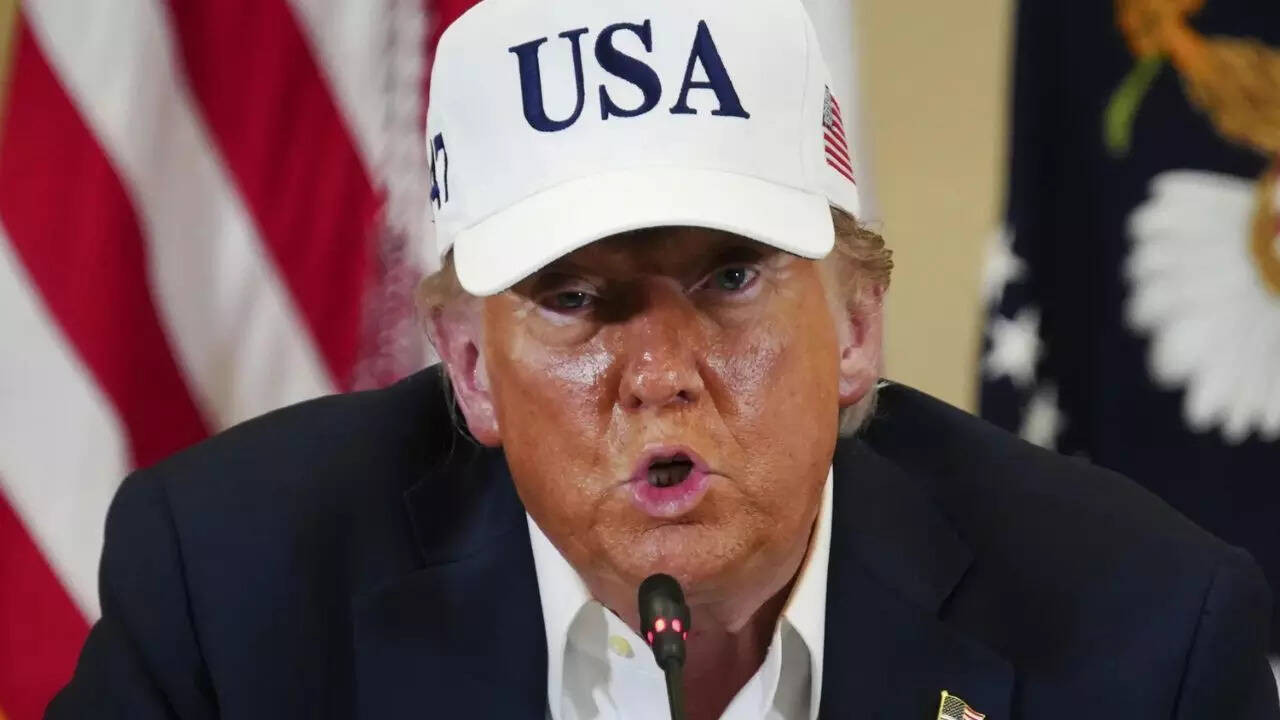Donald Trump has threatened major trade partners with new import tariffs, ranging from 20% to 50%, demanding individual trade deals by August 1. The EU and Mexico have condemned the proposed tariffs as unfair, while expressing willingness to negotiate. Trump cites trade deficits and fentanyl concerns as justification, despite data showing most fentanyl enters the US from Mexico.
A Global Jolt: Could Trump’s Tariff Threat Reshape Trade?
The global economic landscape is bracing for potential turbulence. Donald Trump, never one to shy away from shaking things up, has floated the idea of imposing tariffs – significant ones, at 205% – on goods from 23 countries. This isn’t just a minor tweak to trade policy; it’s a potential earthquake that could dramatically reshape how the world does business. But what’s driving this, and what could the fallout look like?
The justification? Trump argues that these nations are unfairly devaluing their currencies, giving their exporters an artificial advantage. This alleged manipulation, he claims, harms American businesses and jobs. While the specific countries targeted haven’t been explicitly named, the implications are far-reaching, potentially impacting economies across Asia, Europe, and beyond. The core of Trump’s argument revolves around creating a level playing field and ensuring that American companies can compete fairly on the global stage.
Understanding the Potential Impact of Massive Tariffs
Imagine waking up tomorrow and finding that the cost of goods from certain countries has more than tripled. That’s the potential reality under a 205% tariff. For consumers, this would mean significantly higher prices for imported goods, potentially leading to inflation and a decrease in purchasing power. Businesses that rely on imported materials or components could face increased costs, forcing them to either raise prices, absorb the losses, or even cut jobs.

The impact extends beyond just the immediate cost of goods. Supply chains, already strained in recent years, could face further disruption. Companies might scramble to find alternative suppliers, potentially leading to delays and quality issues. The uncertainty surrounding these tariffs could also discourage investment, as businesses hesitate to commit to long-term projects in such a volatile environment.
Currency Manipulation: Is It Really Happening?
Currency valuation is a complex issue, influenced by a multitude of factors including interest rates, inflation, and economic growth. While some countries may intervene in currency markets to influence exchange rates, proving deliberate manipulation is often challenging. It’s a grey area, often subject to differing interpretations and economic models. What one country sees as a necessary measure to stabilize its economy, another might view as an unfair trade practice. The lack of a universally accepted definition of “currency manipulation” further complicates the issue.
Furthermore, imposing tariffs as a response can trigger retaliatory measures. If the U.S. imposes tariffs on goods from these 23 nations, those countries could retaliate with their own tariffs on American products. This tit-for-tat scenario could quickly escalate into a full-blown trade war, harming all parties involved. Consider the impact on American farmers, for instance, who rely heavily on exports to these countries. Such a trade war could create new opportunities for other nations to fill the gaps left behind. For more on how trade wars impact specific industries, read our article on the impact on the automotive sector.
The Broader Geopolitical Implications
The potential ramifications extend beyond just economics. Imposing tariffs on this scale could strain diplomatic relationships and create geopolitical tensions. It could also embolden other countries to adopt protectionist policies, further fragmenting the global trading system. While Trump’s stated goal is to protect American interests, some argue that such aggressive tactics could ultimately isolate the U.S. and undermine its leadership role in the global economy. It is important to consider that imposing massive tariffs may not be the only recourse to protecting American industry.
Looking Ahead: What Happens Next?
Whether these tariffs will actually be implemented remains to be seen. A lot depends on the upcoming elections, the political will of the U.S. government, and the responses of the countries targeted. However, the mere threat of such tariffs is enough to send ripples through the global economy, forcing businesses and governments to prepare for a potentially dramatic shift in the trade landscape. Businesses should consider diversifying their supply chains, exploring alternative markets, and hedging against currency fluctuations. Governments need to engage in constructive dialogue to address concerns about currency manipulation and find mutually beneficial solutions.
Ultimately, the future of global trade hangs in the balance. Navigating these uncertain times will require careful consideration, strategic planning, and a willingness to adapt to a rapidly changing world. The possibility of massive tariffs serves as a stark reminder of the interconnectedness of the global economy and the potential consequences of protectionist policies.







